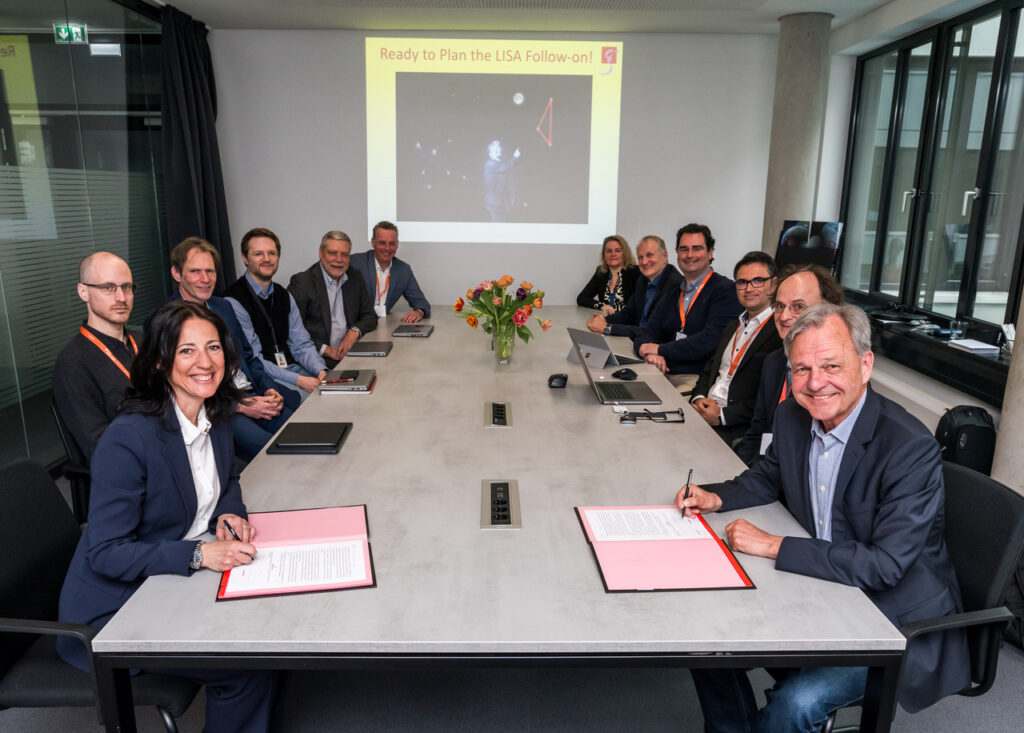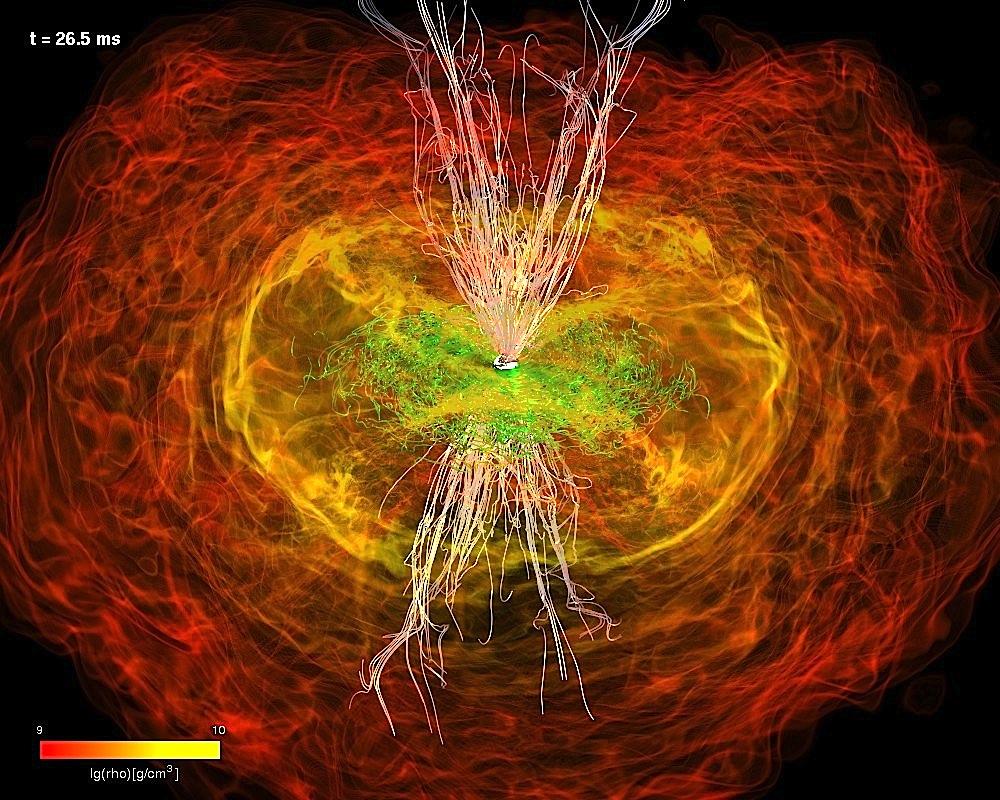(June 17, 2025) Today, the European Space Agency (ESA) and OHB System AG sealed their agreement to build ESA’s Laser Interferometer Space Antenna, LISA. A bold scientific enterprise, the triple-spacecraft mission will be the first space-based observatory to study gravitational waves: ripples in spacetime caused by the most powerful events in the Universe, such as pairs of supermassive black holes colliding and merging.
“We are delighted that the European Space Agency has now chosen the industrial partner who will take on the manufacturing of LISA, marking another major step towards launch”, says Dr Jonathan Gair, chair of the LISA Consortium council and Group Leader at the Max Planck Institute for Gravitational Physics in Potsdam, Germany. “A decade ago, the success of the LISA Pathfinder Mission (LPF) demonstrated that the ambitious vision behind LISA was feasible. Building on that breakthrough, researchers and engineers have worked tirelessly to refine and develop the full-scale LISA mission”.
(c) MildeMarketing
“The scientific and technological development of LISA has largely been completed. We are pleased to now hand over this unique project to OHB for industrial production”, says Karsten Danzmann, director at the Max Planck Institute for Gravitational Physics (Albert Einstein Institute, AEI), and director of the Institute for Gravitational Physics at Leibniz University Hannover. “After most of LISA’s key technologies have already been successfully tested in space with LISA Pathfinder (LPF), the scientific community will continue to support the construction and provide input where needed.”
The efforts of the LISA Consortium, the scientific community behind LISA that works closely together with the space agencies, culminated in the European Space Agency’s formal adoption of LISA in January 2024, followed by the publication of the LISA Definition Study—the so-called ‘Red Book’—in February. This comprehensive document captures the results of years of dedicated work during the mission’s definition phase.
Now, with LISA on track for launch, our focus shifts to maximizing the scientific return of this pioneering mission, which promises to open an entirely new window onto the gravitational universe.
Further information

